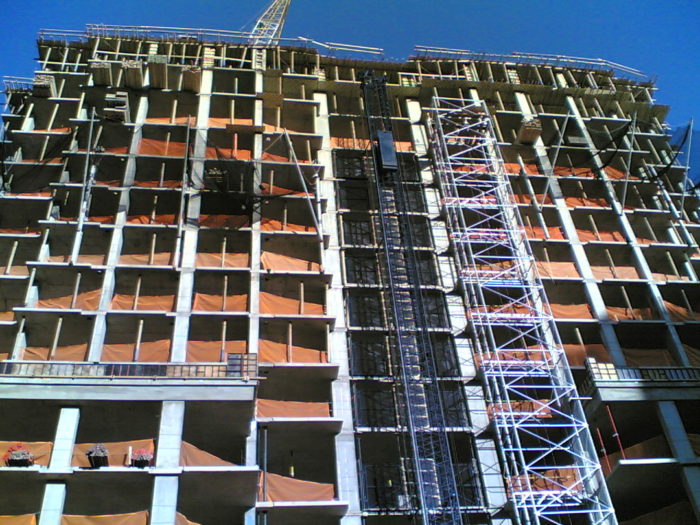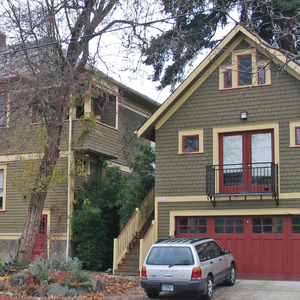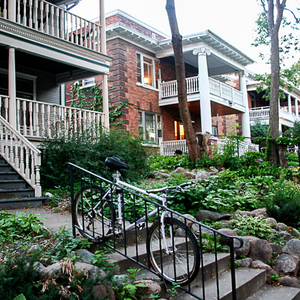
By the end of this century, the world’s population will have increased by half — that’s another 3.6 billion people. According to the UN, the global population is set to reach over 11.2 billion by the year 2100, up from the current population, which was estimated at the end of 2017 to be 7.6 billion. And that is considered to be “medium growth.”
The upscaling required in terms of infrastructure and development, not to mention the pressure on material resources, is equivalent to supplying seven times the population of the (pre-Brexit) European Union countries, currently 511 million. With the global population rising at 45 million per year, comes the inevitable rise in demand for food, water and materials, but perhaps most essentially, housing.
Housing needs are changing
Average household sizes vary significantly between different continents and also by country. According to the UN, recent trends over the last 50 years have also shown declines in household sizes. For example, in France, the average household size fell from 3.1 persons in 1968 to 2.3 in 2011, the same time the country’s fertility rate fell from 2.6 to 2.0 live births per woman. In Kenya, the average household size fell from 5.3 persons per household in 1969 to 4.0 in 2014, in line with a fertility decline from 8.1 to 4.4 live births per woman.
Increasingly aging populations, particularly in developed countries, are causing a demographic shift in future care needs, but it also means that people are staying in their own homes for longer, which affects the cycle of existing housing becoming available each year. One of the most marked changes has been the rise in one and two-person households in the UK and other developed countries.
Statistics published by the National Records for Scotland, for example, reveal the influence of these changing demographics, with future household demand rising faster than population growth. By 2037, Scotland’s population growth is forecast to be 9%, with growth in the number of households forecast to be 17%. This 8% difference is in effect the household growth demand from the existing population.
In England, between now and 2041, the population is expected to increase by 16%, with projected household growth at 23%, resulting in a 7% difference in demand.
As people live longer and one and two-person households increase, the number of future households required rises faster than the population. In 2014, urban issues website CityLab dubbed the situation the “world’s ticking household bomb.”
As more developing countries deliver infrastructure and progress similar to developed countries — improving the standard of living and extending life expectancy — household sizes will decrease, placing greater demand on supply of new housing. So if this difference between household demand and population growth occurs globally at around 7-8% over the next 80 years, this will require an additional 800 million homes.
Taking an average global three-person household (1.2 billion homes) coupled with that 8% demographic factor of total global population over the period results in a need for more than two billion new homes by the end of the 21st century.
Meeting the demand
The current and future demand for new housing is compelling governments to push for further innovations in “offsite” — prefabricated — construction to speed up the supply of new housing. The UK Industrial Strategy published in November 2017 has a strong focus on offsite construction for the future. This sector has grown rapidly over the last decade with new markets in healthcare, education, and commercial buildings. But for prefab construction to deliver more houses at a faster rate means looking at alternative solutions to the problem.
Things that slow down the rate that prefab houses are built include the lengthy preparation time required for sub-structures and foundations; delays to the installation of utilities and building services; and a lack of well-trained construction-site managers capable of delivering the complex logistics involved. With more than 65 million people displaced by man-made and natural disasters globally, this puts further pressures on countries unable to supply enough new housing as it is.
The issue of availability of materials to meet the demands of constructing two billion new homes emphasizes the need for countries to resource them as efficiently as possible. Government policies which encourage the sustainable design of new buildings to maximize future reuse, reduce carbon emissions, and manage resources properly will be essential. Over the next 30 years, the countries which promote policies to help sustain and increase the provision of new housing will be more likely to avoid problems in sourcing materials and price hikes.
For many countries, housing supply is a now a hot topic for national debate and policy strategy. For the rest of the world it will soon become the most pressing issue facing governments this century.
Sean Smith is director of the Institute for Sustainable Construction at Edinburgh Napier University. This post originally appeared at The Conversation.
Weekly Newsletter
Get building science and energy efficiency advice, plus special offers, in your inbox.















3 Comments
I'm surprised the author thinks that the detached single family
dwelling will be the dominant form of housing. I simply can't see that happening due to a lack of arable land.
What I can see is govts setting a maximum square footage based upon the number of occupants and sandwiching everyone into multi-family dwellings. Unless of course we're able to get off this rock and colonize the moon and other celestial bodies.
After all the earth is one big petri-dish and there is only so much room.
2 billion homes
Hi John, thanks for the comment - just to clarify - the paper outlines it could be any home type (houses or apartments) and is not implying it would be single family detached houses. To deliver the number of homes will require apartments (flatted) developments to be the predominant type. I agree there is only so much room. regards Sean
I'm glad I'll be gone...
With the population skyrocketing and these "forced" developments coming into existence with high-rise living, I'm glad that I won't be around to experience the environmental and social fall out from this growth. 80 years from now the world will be quite a different place and I believe it won't be as free and open as it is now.
I for one don't want to live in a high-rise with hundreds or thousands of people. I prefer my own private dwelling where I don't have to see or hear my neighbors. Originally, man lived with nature, which is what I like. Stuffing people into these mass buildings is only a step backwards. We all seen the movies like Outbreak, Contagion, I Am Legend, etc. While these are sci-fi fiction movies, they are all loosely based on realities that can happen when diseases spread easily and quickly in high-population areas. The reoccurring theme in all these movies was that the safest place to be was in the country/rural areas. Cities turned into disasters by both the plague and civil unrest.
During wartime, major cities are the worst place to be as they are targeted first and foremost. My grandparents survived WW2 because they resided in rural Europe. If they had lived in the major cities, the German Nazi Third Reich would have killed them off.
While we are pushing towards a mass population with high concentrations in cities, I believe in the end, we will return to the way we lived before. With nature, in small communes, respecting and harvesting the land. It will probably take a global pandemic, nuclear war, bio war, etc. to see the folly of stuffing millions of people into such a small area.
Either way, I am not interested in living in a high rise in a highly populated city.
Log in or create an account to post a comment.
Sign up Log in